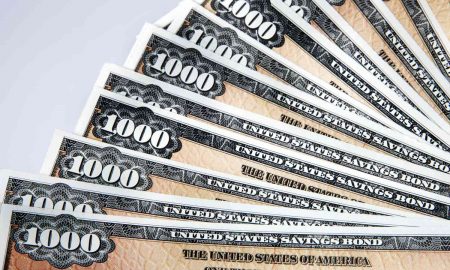
Why Single Ladies Have Less Debt Than Single Men

When is being indebted to people ever a good thing? Don’t answer that, it is a trick question. The answer is either never or not ever. Although that answer might change when that debt presents itself in the form of a mortgage.

A recent GOBankingRates research of 2,500 adults reported that men tend to have three times more debt than women do. This discovery, however, is not exactly a thing for women to be jolly over as although having less debt is generally a good thing, the findings may point out the gender gap in homeownership.
When GOBankingRates inquired from respondents about their mortgages (among other debts), they discovered that men tend to be more likely to report having a mortgage than women. The only time this discovery proved to be false was when the mortgage was for less than $100,000 or between $150,000 and $200,000.

Considering the fact that women have been able to seek their credit (including mortgages) without needing a male co-signer since 1974, it only seems logical to ask the question ‘why are women buying homes at lower rates than men?’
Women: Not Winning, Even When They are Breadwinning
GOBankingRates examined a recent Credit Sesame research to make sense of the difference. According to the study (which examined 1,000 people), 42% of women and 38% of men renters said they didn’t have enough money to make a down payment.
22% of women said they were “extremely concerned with housing affordability,” while their opinion was backed by only 19% of the men. Credit Sesame also noticed that, on average, women tend to have lower credit scores than men, so maybe it’s not all that surprising after all that 21% of the women said they were putting buying a home on hold due to low credit scores.

However, women may still be feeling pressurized to buy regardless of their concerns over the affordability of housing. Redfin looked into down payments of men and women and found out that while the median down payment was around 20%, single men were more likely to make a 20% down payment, while single women were found to be more likely to make a down payment of less than 5%.
The American Association of University Women predicts that although gender wage gap might be closing, it won’t be even until 2119, so if you have concluded that the wage gap is a malefactor here, don’t expect it to be caught anytime in the nearest future.
How to Be a Woman Trying to Buy a Home
Specifically, there really aren’t tips for women who intend to purchase a home asides the general tips that are available for everyone. Nevertheless, they are still worth bearing in mind well before you start going to shop for houses.
Consider the Responsibility
Purchasing a home is not limited to just getting a good rate on your mortgage and then proceeding to rest easy for 30 years. There are many other things involved such as maintenance, other unexpected expenses and not to forget the homeowner association meetings that can last for hours yet achieve little.
Owning a home shouldn’t be something you rush into as it has to be a part of your lifestyle, and if you’re not enthusiastic about the prospect of doing everything necessary to ensure the smooth running of your home, perhaps you should put off thinking about it for now.
Think About the Costs of Buying a Home
It is commonly advised that prospective homeowners do this before they start shopping for homes. Credit Sesame’s mortgage map feature aids you in figuring out what you can possibly afford based on your income and location.

Save Now to Save on Your Mortgage Later
While a 20% down payment on a home may no longer seem like a norm in these here parts, a low down payment usually requires private mortgage insurance (PMI). You pay Private Mortgage Insurance (usually 0.5% or 1% of the home loan value) on a yearly basis until you’ve successfully paid off about 20% of the home’s value.
When you take a look at housing incomes, you would see that there is a win here. When the Urban Institute investigated solo female and male borrowers, it discovered that single African-American, Hispanic and white solo female borrowers consistently default less than their male counterparts.
More in Financial Adviser
-
Here Are the Basic Table Etiquettes Most People Get Wrong
In the realm of dining, table manners are not just about following a set of rules: They are a dance of...
December 19, 2023 -
Turn Your Rental Space Into Your Home With These Effective Tips
Get to Know Your Boundaries Before you start planning your mini-makeover, it is crucial to understand the limitations set by your...
December 14, 2023 -
Brewing Controversy: Unraveling the Bud Light Boycott
In a world fueled by opinions, the recent Bud Light boycott has stirred quite the commotion. It’s not your typical tale...
December 7, 2023 -
How LVMH Became a $500 Billion Luxury Empire
LVMH Moët Hennessy Louis Vuitton is a name synonymous with luxury and opulence. The brand has crafted not just products but...
December 2, 2023 -
Women Spend 20% More Per Year on Out-of-Pocket Health Costs
A recent report from Deloitte has brought to light a concerning issue in the world of healthcare – women spend a...
November 24, 2023 -
How Sound Baths Can Soothe Your Mind, Body and Soul
Have you ever been so caught up in a song that you felt the world melt away? Music, in its many...
November 18, 2023 -
What to Know Before Rebalancing Your Investment Portfolio
Managing an investment portfolio is akin to steering a ship through ever-changing waters. Periodic adjustments are necessary to ensure you stay...
November 11, 2023 -
Jeff Bezos and Fiancée Lauren Sánchez’s Extravagant $500 Million Superyacht
Get ready to set sail on a journey into the opulent world of Amazon founder Jeff Bezos and his fiancée Lauren...
October 31, 2023 -
How to File Your Taxes: A Comprehensive Guide
Filing your taxes can be daunting, but with the right knowledge and preparation, it doesn’t have to be overwhelming. Taxes are...
October 26, 2023















You must be logged in to post a comment Login